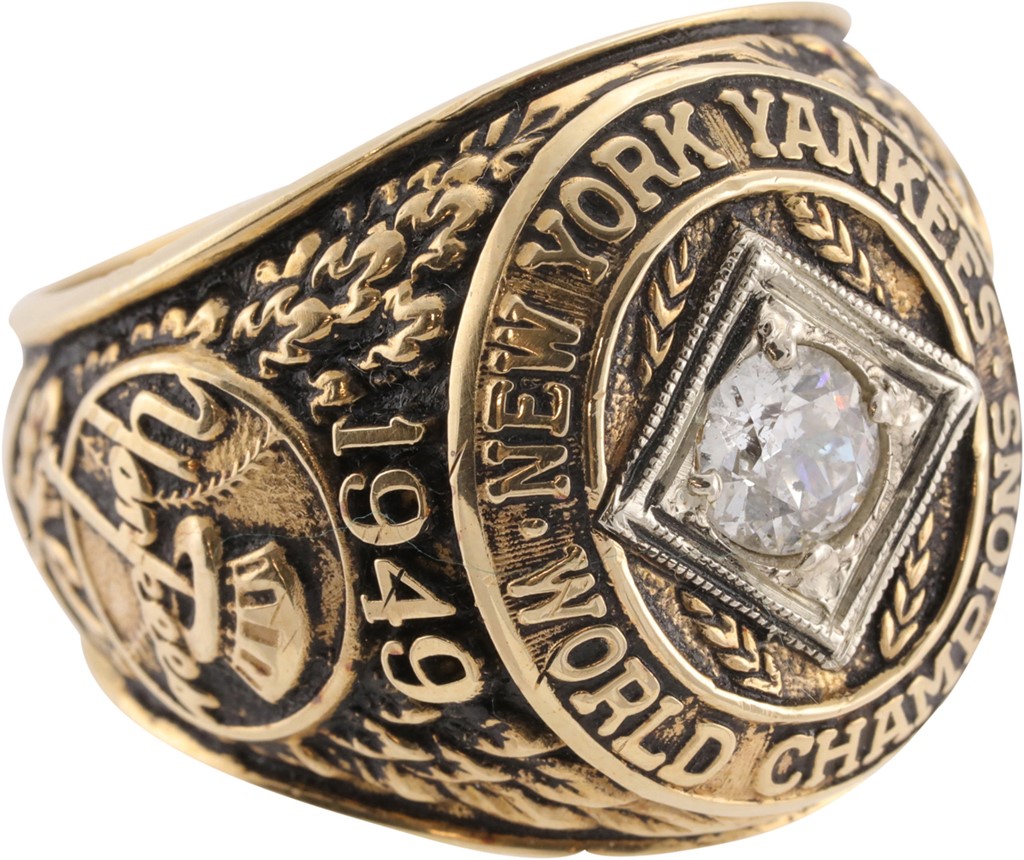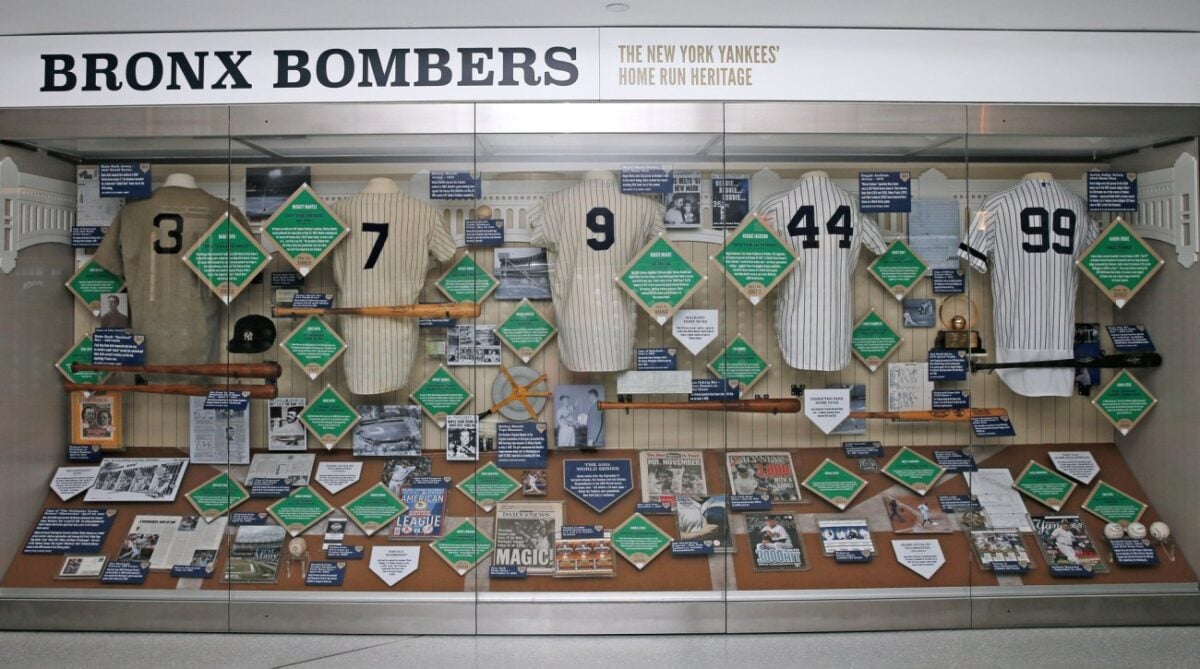Yankees’ record-breaking five-year title run remains unparalleled in baseball lore
John Allen
More Stories By John Allen
- Mother’s Day: How Anthony Volpe’s mom molded him into a Yankee phenom
- Yankees’ Oswaldo Cabrera admits mistake in ninth-inning pitch clock violation: ‘It’s my fault’
- Boone confirms Anthony Rizzo’s likely Sunday activation for Yankees
- Yankees 5-6 Cardinals: Stanton’s near Grand Slam falls short as St. Louis earn first-ever win at new Yankee Stadium
- Wait by ex-Yankees player for Topps Card face change nears five decades
- February 4, 2024
- 12:04 pm
- No Comments
Table of Contents
The decision of Casey Stengel, at 58 years old, to take on the role of the New York Yankees manager after the 1948 season didn’t sit well with the love of his life, Edna. Despite four decades in baseball, Edna had hoped for a more relaxed life in California. Stengel, after challenging experiences with the Brooklyn Dodgers and Boston Braves, felt a personal obligation to prove his managerial capabilities.
In Marty Appel’s biography, “Stengel: Baseball’s Greatest Character,” Stengel explained to Edna that he needed to demonstrate his managerial prowess and win in the majors. This decision, however, disappointed not only Edna but also fans and sportswriters. Stengel’s past antics as a ballplayer, such as releasing a bird during a game, contributed to skepticism and ridicule. His track record as a manager, with no finishes higher than fifth place in nine seasons, fueled doubts.
One of Stengel’s harshest critics was Boston Record sports columnist Dave “The Colonel” Egan, who famously declared that the Yankees were mathematically eliminated from the 1949 pennant race the moment they signed Stengel as their new manager. Egan likened Stengel’s role to overseeing the dissolution of the Yankee empire, paraphrasing Winston Churchill.
However, history would prove Egan wrong, much to the satisfaction and pride of Edna. Stengel’s rookie season as the Yankees manager saw them winning the pennant and World Series, and this success continued in a remarkable championship run. Contrary to expectations, Stengel became a formidable force, achieving unprecedented success in baseball history, going five-for-five in championship wins.
Yankees created baseball history
In the fifth game of the 1949 World Series, Joe DiMaggio of the Yankees hit a home run in the fourth inning, contributing to New York’s 10-6 victory and their capture of the Fall Classic title. The catcher for the opposing team, Brooklyn, was Roy Campanella, and the umpire was Hall of Famer Cal Hubbard, as documented by the National Baseball Hall of Fame and Museum.
As the United States transitioned from the aftermath of World War II to the Korean War, and from President Harry Truman to President Dwight Eisenhower, Yankee fans faced the conclusion of the Joe DiMaggio Era and the onset of the Mickey Mantle Era. The two Hall of Fame centerfielders had a one-year overlap in 1951. DiMaggio’s final three seasons and Mantle’s initial three seasons saw championship victories, but DiMaggio’s excellence had diminished, and Mantle was just beginning to make his mark on baseball.
While both players contributed to the remarkable World Series title streak, catcher Yogi Berra and shortstop Phil Rizzuto played crucial roles, along with a roster of seemingly interchangeable players managed skillfully by Stengel. The pitching rotation, led by Allie Reynolds, Ed Lopat, Vic Raschi, and the assertive Whitey Ford from Queens, made significant contributions.
Although none of Stengel’s teams from 1949-1953 reached 100 wins, and two secured pennants only in the last weekend of the season, each team clinched Series titles. Three of these championships were against the Brooklyn Dodgers, and one each against the New York Giants and Philadelphia Phillies.
The Bronx Bombers sealed their triumph over the Dodgers in 1953 with a four-games-to-two victory, breaking the baseball record set by their predecessors from 1936-1939, who won four consecutive Fall Classics. While the 1972-1974 Oakland A’s and the 1998-2000 Yankees came close, none matched this feat.
An era of dominance
Despite the historical significance, the late ‘40s and early ‘50s Yankee teams often don’t receive the credit they deserve, according to Bobby Brown, a player on the roster for the five consecutive World Series championship teams. Despite not being perceived as dominant like the ’27 Yankees or the ’61 Yankees, this era secured championships. The team witnessed Joe’s decline, Mickey’s emergence, and the contribution of other great players, including some Hall of Famers and All-Stars, along with a formidable pitching staff.
The pitching staff was indeed remarkable. Raschi achieved three 20-win seasons, with a record of 92-40 during the streak. Eddie Lopat, known as “Steady,” went 80-36, and “Super Chief” Allie Reynolds posted a record of 83-41. Whitey Ford, inducted into the Hall of Fame with Mantle in 1974, served in the Army for two years but had an impressive 27-7 record during the championship run.

Berra, a Hall of Fame catcher and a member of all five title teams, highlighted the managerial genius of Casey Stengel. Stengel, often speaking in what reporters dubbed “Stengelese,” formed a unique bond with Berra. The duo played pivotal roles in the historic run, with Stengel calling Berra his “assistant manager” and emphasizing the importance of Berra’s role in the team’s pitching success.
Yogi-isms like “It ain’t over ‘til it’s over” and “It’s déjà vu all over again” became famous, as did Stengel’s own convoluted language. Stengel referred to Berra as his “assistant manager,” allowing him to call pitches. Berra’s impressive stats during the five-year run included an average season of 28 homers, 98 RBI, and a .297 batting average. Despite Stengel’s penchant for platooning, Berra was a consistent presence in the lineup, earning praise for his durability and winning contributions.
Yankees pitcher Bob Kuzava found himself engulfed by his teammates after securing the final out of the 1952 World Series. Despite not pitching in the series’ initial six games, Kuzava delivered 2.2 scoreless innings in Game 7, contributing to the Yankees’ 4-2 victory. This unexpected heroics showcased the unpredictable nature of baseball.
Phil Rizzuto, a key figure in the streak, had a more complex relationship with Stengel. The Hall of Fame shortstop, known as the “Scooter,” harbored memories of Stengel dismissing him during a Dodgers tryout, stating he was too small and suggesting he should shine shoes. Despite this, Rizzuto’s remarkable performances during the streak, particularly in 1950, when he earned American League MVP honors with 200 hits and a .324 batting average, demonstrated his resilience and talent. His defensive prowess added to his contributions.
Allie Reynolds emphasized Rizzuto’s impact, highlighting that any time the ball came his way, whether grounded, lined, or popped, it was his best pitch. Stengel’s managerial strategies, reminiscent of John McGraw’s platoon system during Casey’s playing days with the New York Giants in the 1920s, attracted attention. Stengel adeptly matched batters and pitchers based on their handedness, making pitching changes, pinch-hitting, and defensive substitutions to capitalize on percentages and intuition, showcasing his innovative approach to the game.
Phil Rizzuto, captured in a poignant moment hugging Billy Martin after Game 6 of the 1953 World Series, witnessed Martin’s walk-off single that secured the Yankees’ fifth consecutive World Series title, showcasing the team’s remarkable achievement.
The strategic accuracy
While today’s strategies often involve similar approaches, Stengel’s tactics were considered groundbreaking during his era, earning him praise from Hall of Fame manager Connie Mack. Stengel’s ability to juggle lineups and play successful hunches was unprecedented, with the 1952 season featuring an astonishing 95 different batting orders. Despite initial grumbles from some players, the ultimate reward of cashing World Series checks silenced any complaints.
Stengel’s revolving-door system elevated numerous players to hero status. Bobby Brown, for instance, achieved a remarkable .500 batting average in the 1949 World Series against the Dodgers, contributing significantly to the Yankees‘ victory in four games to one. This highlighted the effectiveness of Stengel’s innovative managerial style in creating opportunities for various players to shine.
At the age of 21 during the 1950 Fall Classic, Ford showcased his talent by pitching eight scoreless innings in the decisive game that secured a sweep of the Philadelphia Phillies’ “Whiz Kids.” A year later, in October, Hank Bauer’s impactful performance, including a bases-loaded triple and a crucial diving catch in right field, contributed to the victory. Reliever Bob Kuzava, who hadn’t appeared in the previous five games, sealed the championship with three outs in the ninth inning.
In the following year, Kuzava replicated his heroics by retiring eight consecutive Dodgers in Game 7, preserving the Yankees’ 4-2 victory. Billy Martin, a player cherished by Stengel, made significant contributions in both the 1952 and 1953 Fall Classics. Martin’s heads-up catch of a Jackie Robinson pop-up in Game 7 of the 1952 Series, with Kuzava on the mound, thwarted a seventh-inning rally and secured a Yankees victory over the Dodgers. In the subsequent Fall Classic, Martin set a record with 12 hits in six games, propelling the Yankees to another triumph over their cross-town rivals and completing their “one-for-the-thumb” campaign.
These strategic moves unequivocally demonstrated Stengel’s ability to achieve success at the major league level. What was once deemed failure had transformed into genius.
What do you think? Leave your comment below.
- Categories: 1949 Yankees, 1950 Yankees, 1951 Yankees, 1952 Yankees, 1953 Yankees, Allie Reynolds, Billy Martin, Casey Stengel, Joe DiMaggio, Mickey Mantle, New York Yankees, Yogi Berra
- Tags: 1949 Yankees, 1950 Yankees, 1951 Yankees, 1952 Yankees, 1953 Yankees, Allie Reynolds, Billy Martin, Casey Stengel, Joe DiMaggio, Mickey Mantle, New York Yankees, Yogi Berra


 Follow Us
Follow Us









